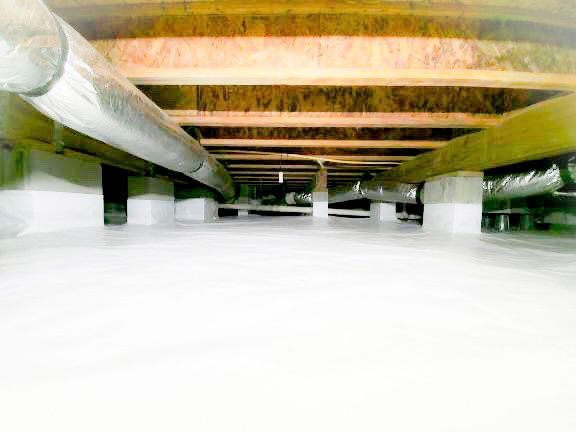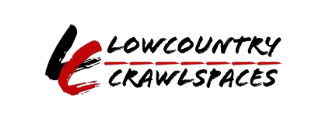Mold Prevention in Storage Areas: Tips and Tricks
Mold prevention in storage areas is a critical concern for homeowners and property managers alike. Mold can not only cause significant damage to stored items but also pose serious health risks to individuals exposed to its spores. The key to effective mold control lies in understanding the specific challenges involved in keeping storage environments mold-free and implementing strategic measures to mitigate these issues.
Storage areas, from basements to attics and even commercial storage facilities, are often susceptible to mold growth due to their typical conditions, which can include high humidity, limited airflow, and cooler temperatures. These factors create an ideal breeding ground for mold spores that are naturally present in the air to flourish and multiply. Additionally, the often overlooked or inaccessible nature of these spaces makes regular maintenance challenging and mold problems can develop unnoticed until they become severe.
In this blog, we will delve into the complexities of preventing mold in storage areas. We will explore the essential strategies for creating conditions that deter mold growth, such as improving ventilation, maintaining optimal humidity levels, and choosing the right materials for storage. Whether you’re storing seasonal decorations, clothing, documents, or other valuables, understanding these principles will help you protect your items from mold damage effectively and sustainably.
Stay tuned as we uncover the best practices for mold prevention that can save you from costly damages and health issues down the line. This guide will equip you with the knowledge and tools needed to maintain a clean and healthy storage environment, ensuring your belongings are preserved in the best condition possible.
Understanding Mold in Storage Environments
Mold in storage areas is a pervasive issue, particularly troublesome due to the subtle ways it can infiltrate and damage valuable items, often going unnoticed until significant damage has occurred. To effectively combat mold, it's essential to understand the conditions that foster its growth and the types of items that are most at risk. This knowledge is crucial in implementing effective preventative strategies to protect your belongings.
Conditions Favoring Mold Growth in Storage Areas
Mold growth is primarily driven by environmental factors within your storage space. The key conditions that facilitate mold include:
Humidity:
- High Moisture Levels: Mold thrives in high humidity environments. Storage areas that experience moisture ingress, whether from structural issues or external elements, can become hotspots for mold growth. Ideally, humidity levels should be maintained below 60% to hinder mold development.
- Sources of Moisture: Common sources include leaking pipes, walls, or floors, and condensation, particularly in areas with poor insulation.
Temperature:
- Warm Conditions: Mold grows optimally at temperatures between 77°F and 86°F, which are common in spaces that are not climate-controlled, such as garages and attics.
- Seasonal Variations: Temperature fluctuations can exacerbate mold growth, especially when warm, humid months lead to increased moisture levels within cooler, poorly ventilated storage areas.
Lack of Ventilation:
- Air Circulation: Poor ventilation traps moisture and increases humidity. Good air flow is essential to disperse moisture and carry mold spores away from the area before they can settle and proliferate.
- Closed Off Spaces: Storage areas are often closed off or sealed, which limits air exchange and creates an environment conducive to mold growth.
Types of Items Vulnerable to Mold
Understanding which items are susceptible to mold is crucial for protecting your possessions. The most commonly affected items include:
Clothing:
- Natural Fibers: Cotton, linen, and wool are particularly prone to mold because they absorb moisture easily, providing mold spores with the water they need to grow.
- Storage Conditions: Clothes left in damp, dark conditions, such as in plastic bags or tightly packed in boxes, are at higher risk of mold damage.
Paper Products:
- Books and Documents: Paper is hygroscopic, meaning it absorbs moisture from the air. This trait makes stored documents, books, and even photographs prime targets for mold, which can cause them to warp, stain, or disintegrate.
- Preventative Measures: Keeping paper products in controlled environments where humidity and temperature are regulated can help mitigate these risks.
Furniture:
- Upholstered and Wood Furniture: These items can absorb moisture, making them susceptible to mold. The porous nature of wood and fabrics can allow mold to penetrate deeply, making eradication difficult.
- Protective Strategies: Using dehumidifiers, maintaining adequate ventilation, and inspecting furniture regularly for signs of mold are effective ways to protect these items.
Key Strategies for Mold Prevention in Storage Areas
Preventing mold in storage areas is crucial for maintaining the quality and longevity of stored items, as well as for ensuring a healthy environment. Effective mold prevention requires proactive measures centered around controlling humidity and enhancing ventilation. Here, we delve into the practical strategies that can be employed to safeguard your storage spaces against mold.
Controlling Humidity Levels
Maintaining optimal humidity levels is paramount in preventing mold growth. Mold spores thrive in moist environments, so keeping the air dry is essential. Here are effective methods to control humidity in storage areas:
Use of Dehumidifiers:
- Selecting the Right Dehumidifier: Choose a dehumidifier based on the size of the storage area. For large spaces, a more robust unit may be necessary to effectively reduce moisture levels.
- Regular Maintenance: Ensure that the dehumidifier’s reservoir is emptied regularly and check for proper functioning to keep the area dry consistently.
Moisture Absorbers:
- Desiccants: Utilizing desiccant bags, which contain silica gel, helps absorb moisture from the air. These are particularly useful in enclosed spaces such as safes and small storage boxes.
- Natural Alternatives: For a more natural approach, materials such as charcoal briquettes or baking soda can also absorb moisture and help maintain dry conditions.
Hygrometers:
- Monitoring Humidity: Install a hygrometer to monitor the humidity levels within the storage area. Maintaining humidity below 60% will significantly reduce the risk of mold growth.
- Regular Checks: Periodically check the humidity levels and adjust the use of dehumidifiers or moisture absorbers accordingly to stabilize the environment.
Sealing Leaks:
- Inspection and Repair: Regularly inspect the storage area for leaks in the roof, walls, or flooring. Sealing these points can prevent moisture from entering and escalating humidity levels.
Ensuring Proper Ventilation
Proper ventilation is crucial in preventing mold by replacing damp, mold-friendly air with fresh, dry air. Here are tips to improve air circulation in your storage areas:
Air Vents:
- Installation: Ensure that there are enough air vents within the storage area. This includes both intake and exhaust vents to create a flow of air that can carry moisture out.
- Maintenance: Keep vents clear of obstructions such as boxes or furniture to maintain air flow efficiency.
Fans:
- Use of Fans: Installing exhaust fans or using portable fans helps increase air circulation significantly. Fans are especially useful in areas without windows or natural air paths.
- Strategic Placement: Position fans near the entrance or damp areas to direct moist air out of the storage space.
Door and Window Practices:
- Intermittent Opening: Regularly open doors and windows to allow outside air to circulate through the area. This is particularly effective on dry, sunny days.
- Mesh Screens: If security and dust are concerns, use mesh screens on windows to keep them open for ventilation without compromising the safety or cleanliness of the storage space.
Clear Pathways:
- Avoid Overcrowding: Arrange stored items in a way that allows air to move freely around them. Avoid stacking boxes directly against walls, as this can trap moist air and promote mold growth.
- Shelving Units: Elevate items on shelves to improve airflow around them, which helps prevent moisture accumulation and mold.
Storage Practices to Prevent Mold
Effective storage practices are essential to prevent mold growth and protect the integrity of stored items. By choosing appropriate packing materials and organizing storage wisely, you can create an environment that discourages mold proliferation. Here’s how to approach these aspects strategically to maintain a mold-free storage area.
Appropriate Packing Materials
Selecting the right materials for packing and storing items is crucial in preventing mold. Mold-resistant materials can significantly reduce the risk of mold development by inhibiting the factors that contribute to its growth. Here are some recommendations for choosing the best packing materials and storage containers:
Mold-Resistant Packing Materials:
- Plastic Bins: Unlike cardboard, plastic bins are impervious to moisture, making them ideal for storing items that are susceptible to mold. Ensure the bins are clean and dry before use.
- Silica Gel Packs: Include silica gel packs in your storage containers to absorb moisture and keep the environment dry.
- Vacuum-Sealed Bags: These are perfect for storing fabrics and clothing. Vacuum-sealing removes air that can hold moisture, thus preventing mold from growing.
Choosing the Right Containers:
- Airtight Containers: Use airtight containers to prevent humid air from seeping in and creating a moist environment where mold can thrive.
- Well-Sealed Bags: For items that cannot be stored in bins, use well-sealed bags or containers that limit air exposure.
- New Cardboard Boxes: If using cardboard boxes, ensure they are new and dry. Old boxes might contain spores or moisture that can lead to mold growth.
Preparing Items for Storage:
- Clean and Dry: Ensure all items are clean and completely dry before packing. Any moisture can promote mold growth over time.
- Protective Covers: Use cloth covers or sheets to wrap items, which can breathe, unlike plastic covers, which can trap moisture.
Organizing Storage to Reduce Mold Risk
How you arrange and organize your storage items can also impact mold growth. Proper organization not only helps in utilizing the space efficiently but also enhances airflow, which is vital for preventing mold. Here are best practices for organizing storage to minimize mold risk:
Avoiding Overcrowding:
- Space Between Items: Maintain a small space between stored items to allow air to circulate freely. This prevents moisture buildup which can lead to mold.
- Do Not Stack Against Walls: Keep storage containers and items away from walls, especially exterior walls that may be colder and prone to condensation.
Enhancing Air Circulation:
- Use Shelving Units: Elevate boxes and items on shelving units instead of placing them directly on the floor. This allows air to circulate around items more effectively.
- Strategic Placement of Items: Place items that are more susceptible to mold, such as fabrics and books, in areas with better air circulation.
- Open Container Lids Slightly: If using plastic bins, keep the lids slightly open to allow some air exchange, which helps keep the contents dry.
Regular Checks and Maintenance:
- Routine Inspections: Regularly check stored items for signs of moisture or mold. Early detection can prevent widespread mold damage.
- Adjust Storage Practices as Needed: Be flexible and ready to adjust your storage practices based on seasonal changes or signs of potential moisture buildup.
Regular Inspection and Maintenance
To safeguard storage areas from mold and ensure the durability of stored items, regular inspection and meticulous maintenance are imperative. By conducting routine checks and adhering to stringent cleaning protocols, you can detect potential problems early and mitigate them efficiently, thus maintaining a mold-free environment. Below, we outline essential practices for inspection and maintenance tailored to preventing mold growth in storage areas.
Routine Checks for Early Signs of Mold
Regular inspections are crucial for early detection of mold, which can prevent widespread damage and significant remediation costs. Here are guidelines for conducting effective inspections:
Frequency of Inspections:
- Regular Schedule: Conduct inspections monthly, especially in climates prone to high humidity. Increase the frequency during rainy seasons or if you've had issues with moisture in the storage area before.
- Seasonal Checks: Perform detailed checks at the change of each season to address any environmental changes that could promote mold growth, such as increased humidity in summer.
What to Look For:
- Visible Signs of Mold: Look for discoloration or fuzzy growths on walls, floors, and items, especially cardboard, fabrics, and wood.
- Musty Odors: A musty smell is often the first indicator of mold presence before visible signs appear.
- Signs of Moisture: Check for condensation on containers, walls, or windows, and any wet spots or water stains that could indicate leaks.
Tools and Equipment:
- Flashlight: Use a flashlight to check corners, behind items, and other hard-to-see areas.
- Moisture Meter: A moisture meter can help you detect high moisture levels in materials before they become visible as mold.
- Inspection Mirror: An inspection mirror can be useful to look behind and under shelving units and large furniture.
Documentation and Action:
- Record Findings: Keep a log of inspection results, noting any changes or potential problems.
- Immediate Action: If you detect mold or excessive moisture, address it immediately to prevent further growth. This may involve removing affected items, increasing ventilation, or adjusting humidity control methods.
Cleaning and Maintenance Protocols
Maintaining a clean and well-maintained storage area is key to preventing mold. Effective cleaning routines coupled with proactive maintenance can significantly reduce the risk of mold proliferation. Here’s how to keep your storage spaces clean and mold-free:
Cleaning Routines:
- Regular Cleaning: Sweep and vacuum storage areas regularly to remove dust and debris that could hold moisture and foster mold growth.
- Deep Cleaning: Perform a thorough clean bi-annually, including wiping down walls and floors with a mold-inhibiting cleaner.
- Disinfect Surfaces: Use an antifungal cleaner or a solution of bleach and water (1 cup of bleach to 1 gallon of water) to clean hard surfaces. Ensure the area is well-ventilated during and after use to prevent moisture buildup.
Maintenance of Humidity and Ventilation Systems:
- Dehumidifiers: Check and clean dehumidifiers regularly. Ensure they are functioning correctly and the moisture collection reservoir is emptied frequently.
- Ventilation Checks: Inspect ventilation systems and fans to ensure they are dust-free and unobstructed. Replace filters or repair any faulty equipment promptly to maintain optimal airflow.
Preventative Measures:
- Reorganize Storage: Periodically reorganize the storage layout to ensure no areas are overly crowded, which can block airflow and trap moisture.
- Check Seals and Containers: Regularly inspect the seals on storage bins and the condition of storage bags. Replace any items that are damaged or compromised.
Responsive Actions:
- Address Leaks Immediately: If any leaks are found during inspections or cleaning, repair them without delay to prevent water from accumulating.
- Mold Removal: If mold is detected on hard surfaces, clean it immediately with mold-killing products. For porous materials like wood or fabric that are mold-infected, consider professional remediation to safely remove mold without spreading spores.
Special Considerations for Different Types of Storage Areas
Each storage area, whether it's a basement, an attic, or an off-site storage unit, poses unique challenges in mold prevention. These environments typically differ significantly in terms of airflow, humidity, and temperature control, all of which can affect mold growth. Understanding these differences and how to effectively address them can significantly enhance your mold prevention strategies.
Preventing Mold in Basements and Attics
Basements and attics are among the most common storage areas within homes but are also the most susceptible to mold due to their prone conditions for moisture accumulation and poor ventilation.
Basements:
- Moisture Control: Basements often have high humidity levels due to their underground location. Using dehumidifiers efficiently can maintain humidity below 60%, which deters mold growth. Additionally, sealing any cracks in foundation walls and floors prevents external moisture from entering the space.
- Ventilation: Enhancing ventilation helps to keep the area dry. Install vents or exhaust fans, particularly in laundry areas if included in the basement, to promote air circulation.
- Waterproofing: Applying waterproof sealant on interior basement walls can prevent condensation and moisture ingress, which are primary culprits for mold in basements.
Attics:
- Proper Insulation: Ensure that the attic is properly insulated, especially around air ducts, to prevent condensation. This is crucial in maintaining a dry environment that is not conducive to mold growth.
- Ventilation Solutions: Attic vents, such as soffit, ridge, and gable vents, are essential for maintaining good airflow, which is critical for preventing mold. Ensure these are not blocked by insulation or other items.
- Regular Roof Inspections: Check the roof periodically for leaks, as water intrusion from a leaky roof can lead to significant mold problems in an attic. Repair any damages to shingles or the roof structure promptly.
Mold Prevention in Off-Site Storage Units
When renting off-site storage units, the control over environmental conditions is often limited, making preventive measures even more essential. Here are tips to prevent mold in these facilities:
Choose Climate-Controlled Units:
Temperature and Humidity Regulation: Opt for climate-controlled units to keep the temperature and humidity levels within a range that discourages mold growth. These units prevent the extreme temperature fluctuations and high humidity levels typical in standard units.
Use of Desiccants:
Moisture Absorption: Place desiccant bags throughout the storage unit, especially near items that are sensitive to moisture. These help in maintaining dry conditions within the unit, further inhibiting mold development.
Proper Packing Techniques:
- Avoid Plastic Covers: While it might be tempting to wrap items in plastic, especially furniture, plastic can trap moisture against the items, fostering a mold-friendly environment. Instead, use breathable materials like cotton sheets to cover items.
- Elevate Items: Use pallets or shelving to keep items off the floor. This not only helps prevent damage from potential flooding but also improves air circulation around the stored items.
Regular Inspections and Maintenance:
- Frequent Visits: Regularly visit your storage unit to check for signs of mold or moisture. Early detection can prevent widespread mold damage and mitigate the need for significant clean-up.
- Air Out the Unit: Periodically opening your unit for a few hours on dry, sunny days can significantly improve air exchange and help evaporate any accumulated moisture.
FAQs
Contact Lowcountry Crawlspaces Today!
Lowcountry Crawlspaces will do everything we can to ensure your experience with us is excellent.
Request A FREE Estimate
CHECKOUT RECENT POST



Schedule Your FREE Crawl Space Evaluation Today
There Is No Crawl Space Job We Can’t Fix!




